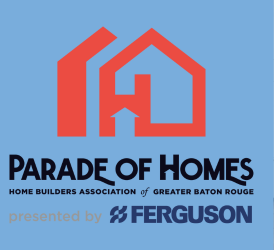
The decision to change the roof cover of your house is important because of the expense and intrusion into the solitude of your house and surroundings. Most homeowners are aware that changing a roof can be one of the largest expenses in maintaining their house. And the tranquility of a peaceful home is often disturbed by a roofing contractor removing and replacing the roof.
As if these issues were not enough, the selection of a roof covering must be made. Material types, colors, flashings, gutters, and vents must all be selected to appease the budget and appearance you desire. Common roof coverings include Architecturally styled asphalt shingles, 3-tab asphalt shingles, rolled asphalt roofing, clay or ceramic tile shingles, and metal roof panels. Today, we will discuss 5 benefits of metal roof panels.
1. Variety of Shapes and Finishes
Metal roof panel systems come in a variety of types, shapes, and colors. The most common types of metal roof systems are R-panels and standing seams, and both systems are available in light gauge steel or aluminum materials. The R-panels are extruded to match the profile selected by the homeowner from the catalog of offerings available from the manufacturer. The profiles can vary from simple, uniform corrugation profiles to alternating, raised rib profiles. R-panels are secured with mechanical fasteners (screws) serviced with a water-tight gasket at the screw head. A multitude of colors are available from manufacturers to cater to your home’s appearance.

Standing seam systems have a uniform appearance with the “standing seams” uniform and equally spaced throughout the field of the roof cover. The standing seam is, in fact, the location of the locking mechanism to secure the roof panels to each other and to the roof deck. The anchorage of each individual panel is concealed by the nature of the anchor with most anchors being clips that are secured to the roof deck and to each individual panel. The joints of the panels and the clips are concealed by a “snap on” cover over the jointed seam providing the tastefully appointed appearance a standing seam roof cover offers. Standing seam roof covers are often constructed with copper and left in a natural state for a “weathered” appearance, or constructed with a light gauge, anodized aluminum finish. The anodized (applied treatment) aluminum strengthens and enhances the finish offering extended color life and durability to the panels.

2. Long Life Span
Another benefit of a metal roof is its long life span. The life span of roof covers can vary drastically depending on the type of roof cover selected. When considering common roof cover systems discussed earlier, asphalt roof shingles have a manufacturer’s warranty of 25 to 30 years but require maintenance and functional attic ventilation to achieve this shingle age. A rolled asphalt roof covering typically has a 20-year manufacturer’s warranty.
Clay tile shingles and ceramic tile shingles may have a 50+ year warranty but will be more likely subject to high maintenance due to shingle displacement and breakage. Depending on the gauges of selected materials in a metal roof panel option, the manufacturer’s warranty on a metal roof panel may be between 40-70 years, when properly maintained. As with most things in life, the higher quality of material thickness and finish will offer a longer manufacturer warranty.
3. Lower Maintenance Burden
The maintenance demand for metal roof systems is typically lower than a shingle or tile roof product because the panels are mechanically anchored and the pieces are fewer in number. The mechanical fasteners tend to work better over a longer period of time than nailed fasteners used with shingles and tiles.
When properly installed and flashed, metal roof panel systems are maintenance-free under normal conditions for years and years. When maintenance is required, it is generally associated with reestablishing the anchors and applying sealant to joints.
4. Energy Efficiency
Energy efficient systems are a big focus in today’s modern construction practices. All aspects of home construction and remodeling are considered, and roof coverings are no different. When compared to other roof coverings, metal panel roofs provide some relief from solar loads (heat) on a house reducing the demand for your air conditioning system.
5. Wind Resistant
The quality and installation of the roof cover on your house are extremely important to wind resistance. High winds often lift shingles and tiles because gravity and adhesives, in part, are used to anchor these types of roof covers. Metal roof panels are mechanically anchored offering a more durable resistance to wind.
Also, metal roof panels can be installed on relatively low-sloped roof pitches that are subject to uplift during high wind events. The uplift can lift shingles and tiles, whereas metal roof panels are more resistant to such activity.
Metal roofs can be an aesthetic component to your house while offering durable resistance to rain and wind. Metal roofs are offered in a variety of shapes, material types, and colors by a multitude of manufacturers. This low-maintenance, long-life roof cover can be ideal for homeowners wanting to minimize worrisome maintenance obligations while enhancing the appearance of their property.
Installation of this type of roof is typically performed by a roofing contractor specializing in sheet metal work. Interview and request references for previous work from perspective contractors when considering a metal panel roof installation. Your local home builders association or contractor licensing board may serve as a resource for contractors.



